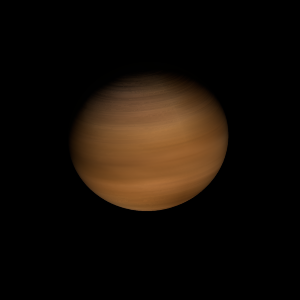|
|
Space Astro
|
Info for exoplanet "Werm Ewwanr"
| Scientific (actual) data |
|---|
| Name | HIP 35173 b |
| Planet status | Confirmed |
| Mass sini | 0.04 |
| Orbital period | 41.516 |
| Semi major axis | 0.217 |
| Orbit eccentricity | 0.16 |
| Discovered | 2019 |
| Updated | 2019-05-20 |
| Omega | 10.73 |
| K | 2.8 |
| Publication | Published in a refereed paper |
| Detection type | Radial Velocity |
| Mass measurement type | Radial Velocity |
| Star name | HIP 35173 |
| Right ascension | 109.04° |
| Declination | -3.67° |
| Star distance | 33.19 |
| Star mass | 0.79 |
| Star sp type | K2V |
| Star temperature | 4881 |
| Wikipedia article | HIP 35173 b |
Back
| |
| Fictional info (?) |
|---|
| Suggested name | Werm Ewwanr |
| Planet type | Cold planet |
| The smooth Borealis basin in the northern hemisphere covers 10 percent of the planet and may be a giant impact feature. |
| Atmosphere | 2H2O | 99% |
| Hydrogen peroxide | 0.033% |
| Carbon dioxide | 0.03% |
| Atmospheric pressure | 90 bar |
 |
| No known satellites |
| Google search for Werm ewwanr |
|
Website by Joachim Michaelis
|
|
|
|